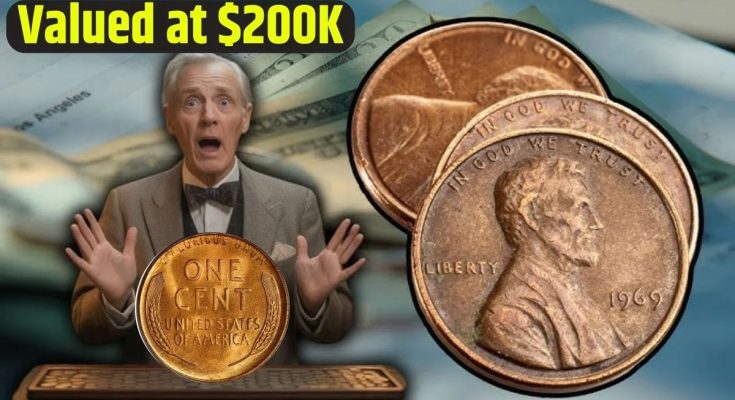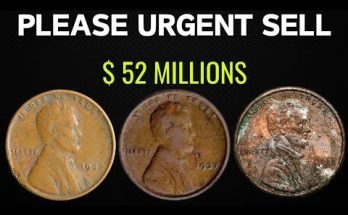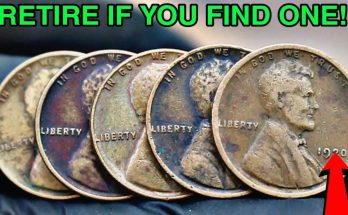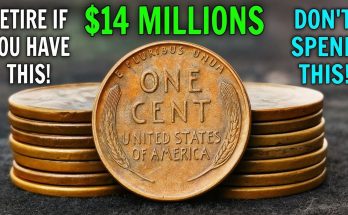Hidden Treasure in Your Pocket? Rare Lincoln Wheat Penny Worth $144,000 Still Circulating
Could there be a fortune hiding in your pocket change? It might sound like a long shot, but for dedicated coin collectors and curious individuals alike, the answer is a resounding “yes.” Among the most legendary tales of modern numismatics is that of the rare 1943 Lincoln Wheat Penny, a tiny copper-colored coin that, if genuine, could be worth a life-changing amount of money—with some examples selling for over a hundred thousand dollars, and even reaching into the millions. This hidden treasure is not just a myth; it’s a genuine minting error that has captivated collectors for generations.
The Story of the Mis-Struck Cent
The reason the 1943 penny is so valuable is tied directly to a fascinating moment in American history. During World War II, a critical copper shortage forced the U.S. Mint to change the composition of the one-cent coin. In 1943, for the only time in its history, the Lincoln cent was produced in zinc-coated steel, giving it a distinctive silver-gray appearance. This metal was chosen to conserve copper for the war effort.
However, a small number of copper planchets (the blank discs used to make coins) were mistakenly left in the minting presses at the Philadelphia, Denver, and San Francisco Mints when production switched over. As a result, a handful of pennies were struck on the wrong metal, creating what is known as a mint error. It is estimated that only about 10 to 15 of these legitimate copper-colored 1943 pennies exist today. Their extreme rarity has made them a numismatic legend, with one of the finest known examples selling for an astonishing $1.7 million at auction.
The legend of this coin has created a widespread hunt. The idea that a six-figure piece of history could still be waiting to be discovered in a bank roll or an old coin jar is a powerful motivator for both seasoned collectors and casual treasure hunters. The key to finding this elusive coin is not luck alone, but knowing exactly what to look for.
How to Identify a Rare 1943 Copper Cent
Before you get too excited about that old penny you found, it’s crucial to know how to distinguish the real deal from a fake. Countless counterfeit 1943 copper cents have been created over the years, often by simply copper-plating the common steel version. Fortunately, there is one simple and effective test.
The most important step is the magnet test. A genuine 1943 steel cent will be attracted to a magnet and stick to it. The rare, copper-colored version, however, will not stick to a magnet. If you find a penny with the date “1943” and it is not attracted to a magnet, you may have a valuable coin on your hands. The coin will also have the reddish-brown hue of a standard penny, not the silvery-gray of the steel cent. This simple test is the first and most critical step in authenticating your find.
Beyond the 1943 Penny: Other Hidden Treasures
While the 1943 bronze cent is the holy grail, it’s not the only valuable coin you might find in circulation. The Lincoln cent series is filled with rare dates and significant varieties that are worth a substantial amount to collectors.
- The 1955 Doubled Die Obverse: One of the most famous error coins in all of U.S. numismatics, the 1955 doubled die cent has a prominent doubling of the date and inscriptions on the front of the coin. This striking error makes the coin highly sought after.
- The 1969-S Doubled Die Obverse: Another incredibly rare error coin, the 1969-S doubled die is distinguished by a clear doubling on the date and the word “LIBERTY.” This coin is so rare and valuable that the U.S. Mint initially confiscated some of the earliest finds, leading to a dramatic increase in its mystique and value. In high grades, this coin can be worth well over $100,000, as reflected in the a
Valued at $200Kimage that often accompanies articles on this very topic. - Other Key Dates: Don’t forget to look for other low-mintage key dates such as the 1909-S V.D.B. (with the designer’s initials on the reverse), the 1914-D, and the 1931-S cents.
In the end, while the 1943 copper cent remains an incredible dream, the world of coin collecting offers many opportunities for discovery. It’s a hobby that transforms loose change from a nuisance into a potential treasure trove. Whether you’re searching for a historic error or a rare key date, the simple act of checking your pockets is a fun and free way to engage with history—and you just might find a small fortune along the way.



